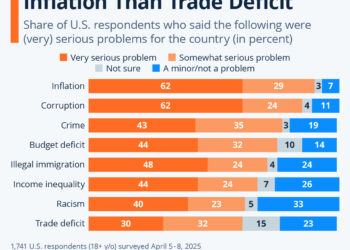Understanding Art Engagement: A Global Perspective
Art is not just a medium for expression; it’s a vital component of culture, heritage, and community. Celebrated worldwide on April 15 as World Art Day, art promotes creativity, innovation, and cultural diversity, fostering curiosity and dialogue among diverse populations. Despite the undeniable importance of art, recent data indicates a concerning trend regarding public engagement with art exhibitions and museums.
The Relevance of World Art Day
World Art Day serves as a reminder of art’s impactful role across society. UNESCO emphasizes that art is crucial in nurturing creativity and cultural dialogue. This annual celebration aims to encourage people to appreciate and participate in artistic endeavors, highlighting the need for greater engagement with different art forms across the globe.
Current Trends in Art Exhibition Attendance
According to a Statista Consumer Insights survey, there is a distinct disparity in attendance at museums and art exhibitions worldwide. The data reveals a strikingly low percentage of the population purchasing tickets to these cultural institutions over the past year.
Regional Insights: Who is Visiting?
High Engagement Countries
Countries like China, India, and Italy emerged as leaders in museum and exhibition ticket purchases. Each reported that approximately 15% of online respondents had bought tickets in the previous year. Such figures suggest a cultural inclination towards art and its appreciation in these nations, indicating a broader public engagement with artistic expressions.
Lower Engagement Countries
Conversely, nations such as Germany and the United States illustrate a significant decline in interest, with only 7% and 6% of respondents, respectively, having purchased tickets. These statistics raise questions about the barriers to access, public interest, and the overall effectiveness of art institutions in reaching potential audiences.
Factors Affecting Art Attendance
Understanding the intricacies behind these numbers requires an exploration of several contributing factors that may be impacting art and museum attendance.
Economic Considerations
Economic circumstances dramatically influence people’s ability to participate in cultural activities. In nations where economic challenges persist, spending on leisure activities, including art exhibitions, may not be prioritized, leading to reduced attendance.
Accessibility Issues
Access to art can also be a concern. In many regions, museums and exhibitions are not easily accessible to underprivileged communities. Limited reach and an absence of inclusive programs can alienate potential audiences, inhibiting broader engagement.
Cultural Shifts
Shifts in consumer behavior, especially among younger generations who gravitate towards digital content, may also reflect declining interest in traditional forms of art consumption. The rise of online platforms for artistic expression has transformed how audiences engage with art, highlighting a need for adaptation from traditional institutions.
The Role of Institutions in Promoting Art Engagement
Art institutions have a critical task ahead of them if they aim to increase public interest in exhibitions and museums.
Innovative Programming
Developing new and exciting programming can attract diverse audiences. Interactive exhibits, virtual tours, and community-inclusive events may bridge the gap and revitalize interest in art experiences.
Outreach and Education
Enhancing outreach and educational programs is vital for fostering a deeper connection between the public and artistic expressions. Schools and local organizations should collaborate with museums to promote art as a vital part of cultural education.
Leveraging Digital Platforms
In a world that increasingly relies on technology, art institutions can utilize digital platforms to reach wider audiences. Virtual exhibits and social media marketing can engage those unable to visit physical locations, making art more accessible than ever before.
Future of Art Engagement
While current statistics suggest a decline in attendance at art exhibitions and museums in certain countries, the potential for increased engagement remains. Through strategic initiatives, inclusive programming, and by adapting to contemporary trends, art institutions can strive to nourish a greater appreciation for art globally, ensuring it remains a vibrant and integral part of our cultural landscape.





